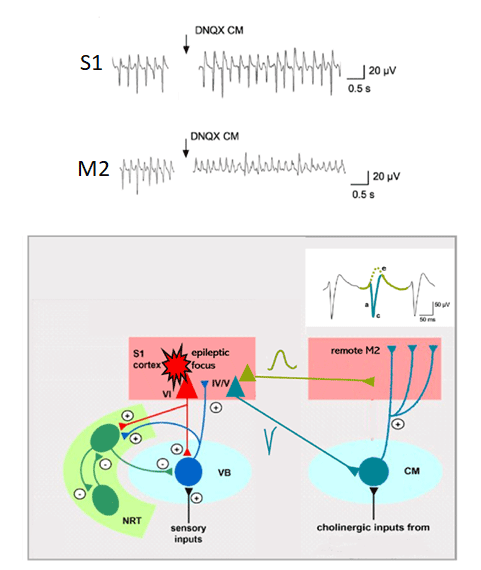Biomarkers for the ictogenesis of absence seizures
A. Lüttjohann, Eleni Nikalexi

Absence epilepsy is one of the most common forms of idiopathic generalized epilepsies found in children and its etiology is poorly understood. With the current pharmacological treatment approaches up to 30% of patients remain refractory and 60% of them show substantial neurological side effects. Neurophysiologically absence epilepsy is characterized by spike and wave discharges (SWD), which can be recorded in the electroencephalogram of patients. A recent study of our group revealed that the spike- and the wave component of the SWD are generated at different locations within the thalamo-cortical system and that the wave component forms the basic rhythm of the SWD in the form of 5-9 Hz oscillations.
In the current project it is aimed 1. to identify the exact cortical origin and the generalization of the 5-9 Hz oscillations, 2. to investigate whether the oscillations induce changes in excitability and changes in coupling with other afferent brain structures prior to SWD onset, which might function as a biomarker for SWD generation; and 3. to identify critical timepoints during the 5-9 Hz oscillations, in which a small interference (e.g. by means of a single pulse stimulation) might be sufficient to prevent the generation of an SWD. In this way the project provides new insight concerning the neuronal network mechanisms of absence seizures and a new treatment approach aiming at SWD prevention.

